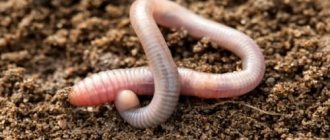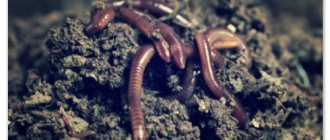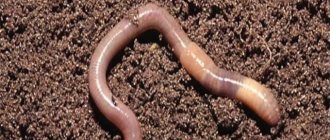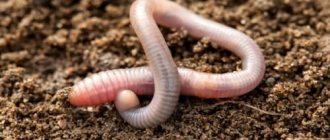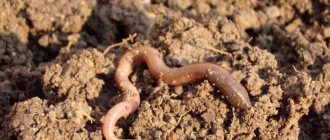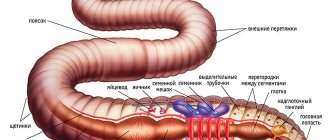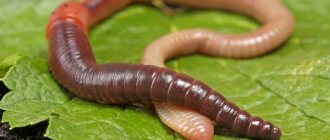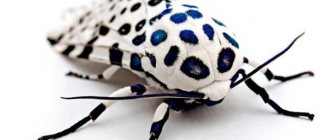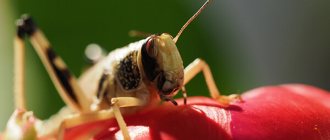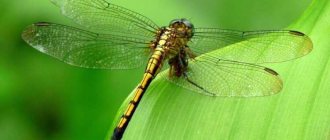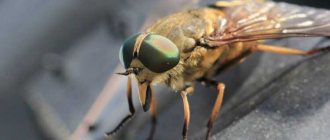The earthworm (lat. Lumbricidae) belongs to the class of invertebrate animals and the suborder of earthworms (Haplotaxida). Its body consists of ring-shaped segments, the number of which can reach 320! These animals are widespread in all corners of our planet. They are only absent in Antarctica. Very often children are interested in how earthworms move. In our article we will examine this issue in detail, and at the same time learn about their appearance, lifestyle and method of reproduction.
Lifestyle of earthworms
If you walk through the garden in the morning or after rain, then, as a rule, you can see small piles of soil thrown out by worms on the ground, and in the puddles you can see them themselves. Due to the fact that these individuals crawl to the surface of the earth after rain, this name was assigned to them. The earthworm (the photo above shows this invertebrate animal) also crawls onto the earth's surface at night. As a rule, it prefers soil rich in humus, so it is rarely found in sandstones. The earthworm does not like swampy soils. These features are explained by the physiological characteristics of Lumbricidae. The fact is that worms breathe over the entire surface of their body, which is covered with a mucous epidermis. There is too little air dissolved in soil saturated with moisture. As a result, the earthworm suffocates there. By the way, this explains his behavior during the rain. Dry soil is also detrimental to representatives of Haplotaxida: their skin dries out and breathing stops. In wet and warm weather, earthworms (the photo below shows Lumbricidae in all its “glory”) stay closer to the surface of the earth. With a decrease in temperature, as well as with the onset of a dry period, they crawl into the deeper layers of the soil.
Benefit
When we see a blooming garden, we understand that to some extent it is thanks to earthworms that enrich the soil with nutrients. These creatures process organic matter in the soil, turning it into nutrients that are easily absorbed by plants.
When earthworms dig, they plow the soil at the same time, which allows roots to grow, allowing for healthy plant growth. Tilled soil absorbs water and holds it inside. In addition, air circulates better in such soil. The movements of earthworms bring nutrients found deep in the soil to the surface. Nutrients enter the upper layers of the soil, where they are easier for plants to absorb.
In addition to the benefits that earthworms bring to plants, they also serve as food for birds. In early spring, birds fly to gardens precisely in search of worms, because at this time of year there are still no fruits or seeds that could serve as food for them. If an earthworm is placed in a container that does not allow light to penetrate, it will live in it for about two weeks, provided that peat moss is first placed in the container.
Gardeners can help earthworms thrive by adding organic matter to the soil. When the organic content of the soil decreases, earthworms go in search of other soil with more favorable conditions, otherwise they will simply die. Proteins from the remains of worms are converted into nitrogen and feed plants. However, this benefit is very short-lived.
The death of earthworms implies a deterioration in the condition of the garden, such an important role they play in nourishing the soil.
Sources
- https://nasotke.pro/sad/dozhdevoj-chervhttps://www.zoolog.com.ua/ru/naiprost48.htmlhttps://doklad-referat.ru/%D0%94%D0%BE%D0%B6 %D0%B4%D0%B5%D0%B2%D0%BE%D0%B9_%D1%87%D0%B5%D1%80%D0%B2%D1%8C_(%D1%85%D0%B0% D1%80%D0%B0%D0%BA%D1%82%D0%B5%D1%80%D0%B8%D1%81%D1%82%D0%B8%D0%BA%D0%B0_%D0% B8_%D1%81%D1%82%D1%80%D0%BE%D0%B5%D0%BD%D0%B8%D0%B5)https://givnost.ru/dozhdevoj-cherv-obraz-zhizni- i-sreda-obitaniya-dozhdevogo-chervya/https://www.botanichka.ru/article/earthworm/
Appearance of earthworms
Adults reach 30 centimeters in length, although there are some larger specimens. The body of an earthworm is slippery, smooth, cylindrical in shape, and consists of segments - piece rings. This constitution is explained by the way of life of Lumbricidae: such a structure facilitates the process of movement in the soil. The number of piecework rings reaches two hundred. The surface of the body, which could conventionally be called the back, is convex, the abdominal surface is flat and lighter. On the earthworm's body, where its front part ends, there is a thickening called the girdle. It contains special glands that secrete a sticky liquid. During reproduction, an egg cocoon is formed from the girdle, and eggs develop in it.
How do earthworms move?
Representatives of Haplotaxida crawl. First, they extend the front end of their body and cling to uneven ground surfaces with special bristles, which are located on the ventral side of the rings. After this, the muscles contract and the back of the body is pulled forward. The movement of a worm in the ground is characterized by the fact that it makes passages in the soil. At the same time, with the pointed end of its body, it pushes the earth apart, and then squeezes between its particles. It is also interesting how earthworms move in denser layers. As they move, they swallow soil and pass it through their intestines. Worms, as a rule, swallow soil at a considerable depth, and throw it out through the anus already at the top, near their own burrow. It can often be observed in the summer on the surface of the earth in the form of lumps and elongated “laces”.
Nutrition
The answer to the question of what earthworms can eat is very simple - everything. Their eating process is very interesting: they swallow a certain amount of soil and select all the organic substances from it. They eat the food they find underground in small pieces, suck on it, and drag it into holes. They can stock up on food for a “rainy day” in special burrows, which are sealed for safekeeping. After assimilation of food, they come to the surface, where they excrete the remains of vital activity, doing this in strictly defined places.
Earthworms feed on insects, rotting animal carcasses, manure, lettuce and watermelon rinds. In most cases, earthworms avoid alkaline and acidic substances. However, their food preferences depend on their species. Nightworms, as their name suggests, scavenge for food from the surface after dark.
Earthworm and its biology
Worms have well-developed muscles, which make this method of movement possible. Their muscles are located under the epidermis; in fact, they, together with the skin, form a kind of musculocutaneous sac. The muscles are located in two layers. Directly below the epidermis are the circular muscles, and below them is a second, thicker longitudinal layer (consisting of long contractile fibers). When the longitudinal muscles are compressed, the earthworm's body becomes thicker and shorter. When contracting the circular muscles, on the contrary, it is long and thin. The alternate contraction of both layers of muscles, carried out under the influence of the nervous system branching in the muscle tissue, determines the movement of Lumbricidae.
The movement of worms is greatly facilitated by the presence of small bristles on the lower part of the body. They can be felt if you run a wet finger along the abdomen of the worm from the rear to the anterior end. Thanks to these bristles, earthworms not only move in the soil, but also “grab” the ground when they are tried to be pulled out. They also help to rise and fall along already made earthen passages. With this, we will finish dealing with the question of how earthworms move, and move on to no less interesting facts about the life of Lumbricidae.
Skin-muscle bag
If we take a worm in our hands, we will find that its skin is moist and covered with mucus. This mucus facilitates the movement of the worm in the soil. In addition, only through moist skin does the oxygen necessary for breathing penetrate into the body of the worm. Under the skin there are circular muscles fused with it, and under them a layer of longitudinal muscles - a skin-muscular sac is obtained. The circular muscles make the body of the worm thin and long, while the longitudinal muscles shorten and thicken. Thanks to the alternating work of these muscles, the movement of the worm occurs.
Circulatory system
The circulatory system of earthworms consists of two longitudinal vessels - abdominal and dorsal, as well as branches connecting them. Due to muscle contraction of the walls, blood moves throughout the body. The blood of earthworms is scarlet. With its help, communication is established between internal organs, and metabolism is also carried out. As the blood circulates, it carries nutritional compounds from the digestive organs, as well as oxygen coming from the skin. At the same time, carbon dioxide is removed from the tissues. In addition, the blood removes unnecessary and harmful compounds to the excretory organs.
Irritation of earthworms
Earthworms do not have special sense organs. They perceive external irritations thanks to the nervous system. Worms have a highly developed sense of touch. The nerve cells responsible for this are located over the entire surface of the skin. The sensitivity of earthworms is so great that the slightest vibrations in the soil force them to hide in burrows or in deeper layers of the earth as quickly as possible. However, the importance of sensitive nerve endings is not limited only to the function of touch. Scientists have found that with the help of these cells, earthworms are able to sense rays of light. So, if you direct a flashlight beam at a worm at night, it will quickly disappear into a safe place.
The response of animals to any irritation, carried out thanks to the nervous system, is called a reflex. It is customary to distinguish between different types of reflexes. Thus, the contraction of the earthworm's body when touched, as well as its movement under sudden illumination, is a protective function. This is a protective reflex. Experiments by scientists have shown that earthworms can smell. They use their sense of smell to find food.
What to do if there is an earthworm in a pot with a palm tree?
Lyudmila Chaevnikova
You can spill Intavir solution. You can't leave the worm. There is not enough food for them in the pot - they eat young roots.
bear
Nothing to do! He will loosen the soil for you. It is absolutely harmless.
Lyudmila Kolosova
Let him live. It does no harm other than good.
yukka
a weak solution of potassium permanganate or catch it when watering
Bagheera Fluffy
Oddly enough, earthworms in flower pots around the house do more harm than good. I have encountered such a case more than once. Therefore, my advice is to get rid of it using potassium permanganate and catching it, as advised above, or replace the soil in the pot with a new one.
Tatyana Agalakova
They don’t live long in pots))) They themselves will “exterminate”... I had this happen after adding new soil, apparently there were a lot of eggs of these worms, they hatched and briskly, so after watering they “danced” on the surface... I asked here, I They answered in exactly the same way... They disappeared on their own within a month and a half. But I always collected the visible ones and threw them away.
Vladimir Vasiliev
In pots, earthworms eat the roots. Pour nitric acid with 1-2 ml of concentrated acid per liter. Don't be afraid, the plants will only benefit. The worm will come to the surface. Grab it with tweezers; you may not be able to grab it with your fingers.
Butterfly Effect
For me it started up in arrowroot. I threw them away when loosening the soil. They only cause harm and eat the roots.
Reproduction
Earthworms reproduce sexually, although in general protostomes are hermaphrodites. Each member of Haplotaxida has male organs called testes (which produce sperm) and female organs called ovaries (which produce eggs). The earthworm lays its eggs in a slimy cocoon. It is formed from a substance that is released through the belt. Next, the cocoon in the form of a muff slides off the body and is pulled together at the ends. It remains in the ground until the young worms emerge from it. The cocoon serves to protect eggs from dampness and other unfavorable influences.
Who else lives in the soil?
The well-being of the soil is ensured by numerous soil inhabitants, but most of them are so small that we do not notice them. Healthy and fertile soil is full of life: bacteria, fungi, algae, protozoa, mites, springtails, larvae, worms, ants, nematodes, millipedes, enchytraeids and much more.
All depend on each other, many exist in symbiosis. Manipulations with herbicides, fungicides, and insecticides destroy established connections and the vacated living space is very quickly occupied by aggressive forms, most often pathogenic.
Worms feed on dead organic matter, but without soil microorganisms they will not be able to do this. Thus, the clean land beloved by many without a single weed is half dead, its biocenosis is disturbed, it requires constant labor and investment in the form of fertilizing, loosening, weeding, and watering. Instead of soil biota, gardeners work. And vice versa - if there is organic matter in the zone of plant roots, all soil living creatures will actively work there, providing the plants with everything they need.
Methods of gardening and gardening, of course, are everyone’s personal business. But there are already more than a dozen annelids in the Red Book of the Russian Federation, and behind them in the chain are all those who feed on them.
What are worms for?
This section will be useful for those who think that earthworms are only needed for fishing. Of course, a fisherman has nothing to do on the river without them, but this is not all the benefit from representatives of Lumbricidae. The role of the earthworm in nature is so great that it cannot be overestimated. They promote the decomposition of organic matter in the soil. In addition, earthworms enrich the soil with the most valuable fertilizer - humus. They are also a kind of indicator: if the soil contains a lot of worms, it means it is fertile.
A full understanding of the role of Haplotaxida came to humanity relatively recently. However, even now many farmers prefer to use chemical fertilizers, despite the fact that they kill all living things. Today, an alternative to chemicals has been found - vermicompost and vermicompost. In fact, this is a magic wand for the earth, because they contain a large amount of phosphorus, potassium, nitrogen, that is, precisely those substances that are vital for plants to grow fully.
Business relevance
Breeding worms at home can hardly be called a popular type of business. But the low barrier to entry, ease of cultivation and care, as well as the availability of various sales sources indicate the prospects of organizing a vermifarm (a place where worms are grown). You can make money by breeding worms at home in various ways of organizing a business:
- Sales through our own retail fishing outlets. Not every fisherman likes to pick in the ground in search of earthworms, and besides, today it is not so easy to find enough of them. Many people simply purchase bait at special points. One individual today costs 1-3 rubles, and for full-fledged fishing you need at least 30 worms.
- Sales to poultry and fish farms, pet stores for feeding. For fish and birds, live food must be present in the diet. Earthworms have great nutritional value. Therefore, farmers, for example, those who breed Indian ducks at home, constantly purchase worms as food, moreover, you can negotiate with them on periodic deliveries.
- Sale of breeding stock for those who want to breed worms at home.
- Production of vermicompost, which can be obtained as a result of the vital activity of worms. Vermicompost is a valuable organic fertilizer, the best nutrition for any plants. Buying vermicompost is interesting for both ordinary summer residents and large landowners, farmers, and those who are looking for profitable business ideas with small investments. Vermicompost can be collected every 4-6 weeks.
- Sales to pharmaceutical companies for the production of medicines.
- Production and sale of vermicelli. Worm tea (vermic tea) is a product of the vital activity of worms and is a unique highly concentrated biohumate. Increases crop yields and has a protective effect on them.
